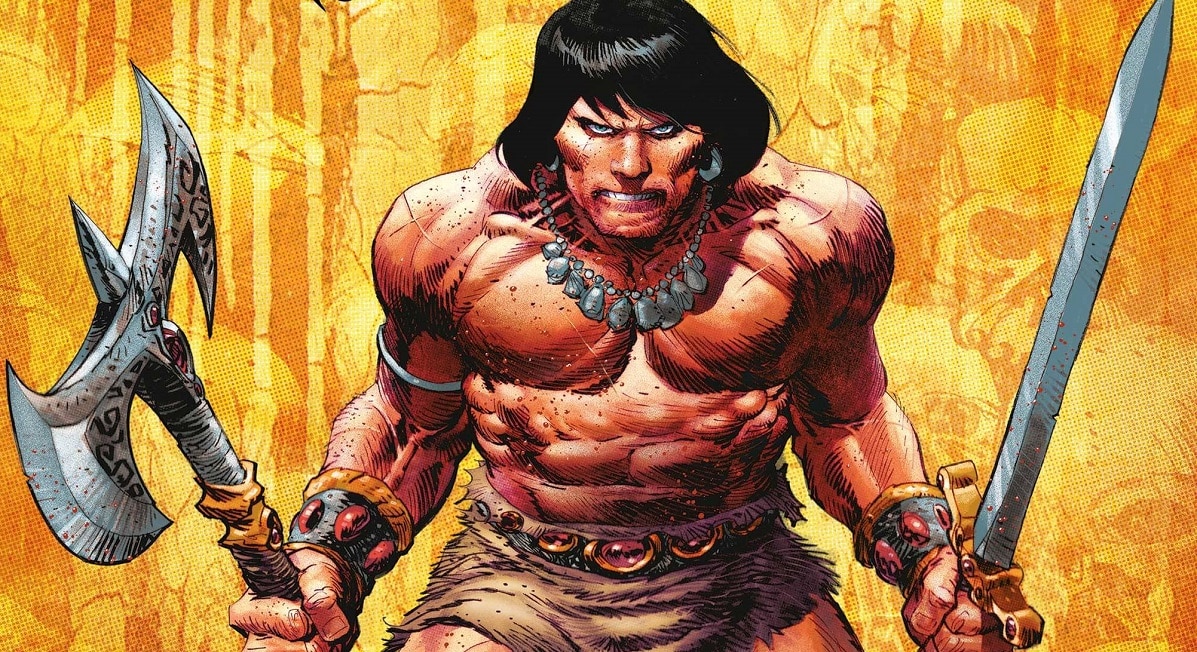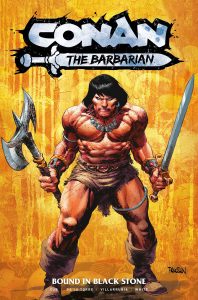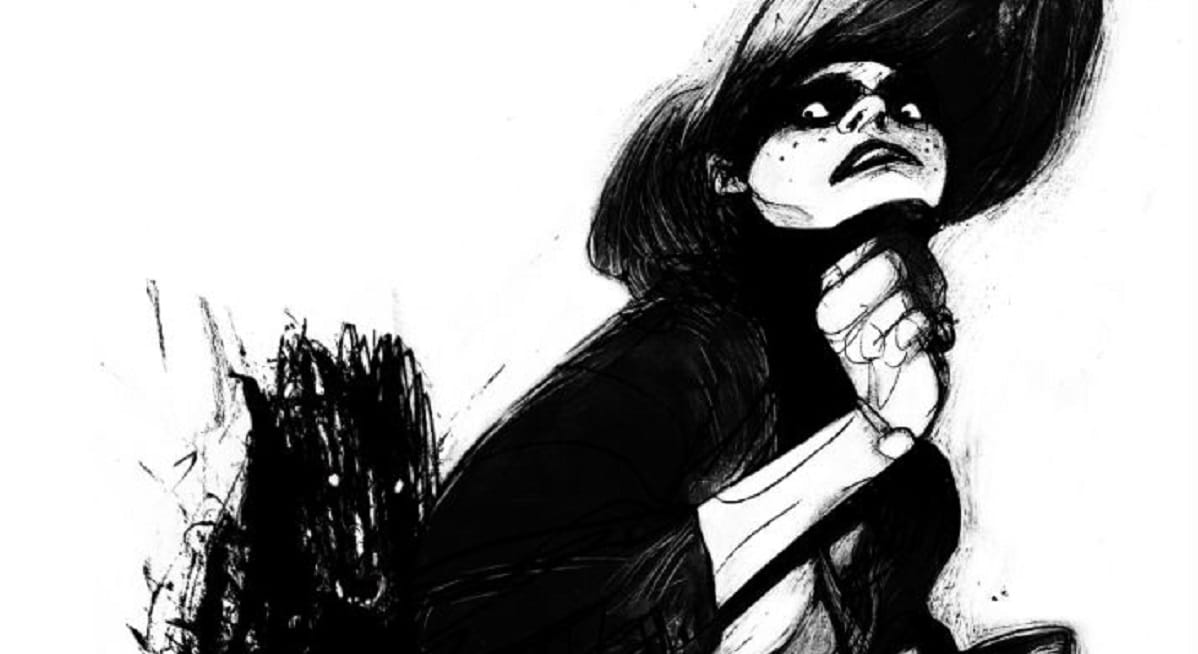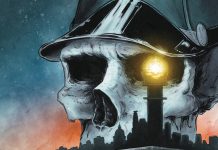 Conan The Barbarian – Bound in Black Stone
Conan The Barbarian – Bound in Black Stone
Writer: Jim Zub
Artist: Roberto De La Torre
Colorist: Dean White and Jose Villarrubia
Letterer: Richard Starkings of Comic Craft
Map Illustrator: Francesca Baerald
Publisher: Titan Comics
The Story
Journey back the Hyborian Age of Man as Conan the Barbarian and Brissa of the Gurian Tribe aim to stem an onslaught of the damned and save Cimmeria from a certain doom. The quest takes them into the heart of the Citadel of the Black Stone and brings them into the clutches of the cult that worship at the altar of the Black Stone. Along the way Conan learns about the origins of this curse and about the history of his land from ages past. Yet is the knowledge enough for Conan to free his land and prevent the Army of the Lost from overrunning the continent?
A Comic From A Time Long Past
Conan The Barbarian – Bound in Black Stone is the first collected volume of Jim Zub’s run on Conan The Barbarian under Titan Comics. Titan’s Conan hems closer to the character’s pulp fiction roots with a hefty focus on capturing tone and aesthetics of the classic swords and sorcery comics from the Bronze Age. The collection contains the Free Comic Book 2023 story, issues 1-4 of the ongoing, and the various back matter of the respective issues including this beautiful Map that shows the world. Altogether, this makes for a hefty story with some fantastic art by Roberto De La Torre. This makes for a fun read for readers who prefer the pulpier side of comics over the superhero fare.
Jim Zub crafts a tale that pulls from various angles of the Robert Howard universe—Thalla Doom, the cult of the Black Stone, Brule, and Kull—and synthesizes it all into a solid jumping on point for anyone who is even the slightly bit curious about Conan of Cimmeria. This volume presents a story that is well constructed and well executed. The inclusion of the Free Comic Book Day special speaks volumes to the attempt to craft an excellent Conan trade that can be someone’s first exposure to the character as well as a satisfying experience for long time fans. The FCBD story is as much of a Conan origin as possible with a focus on the Sack of Venarium and young Conan’s call to adventure. It is an excellent introduction to the character.
The rest of the trade focuses on the Bound in Black Stone arc which seeks to build out the Hyborian Age’s world for the reader with a focus on the Picts and the world of the occult that surrounds them. There is lot of character moments from Zub that shows the depth of Conan and that he is not just some slab of man that can swing a big sword. We get to see Conan be smart and cunning as well as swing that big sword of his.
New Additions and Familiar Faces
The Picts are a big part of the story as the Army of the Lost originated as a fallen Pict clan that sought to use the allure of dark magic to gain immense power. Zub presents the Picts as a diverse group though and not just the stereotypical savages that often framed the characters. This is done with the scout- Brissa.
She is a new character for this story and Zub uses her to inform the reader a lot about the world. She also serves as a contrast to Conan. For while Conan seeks adventure in the larger world around him, Brissa is reluctantly journeying across the Northlands and only doing so out of a sense of obligation. Often trying to serve as a herald of the Army of the Lost in a foolish attempt to spare the lives of the innocents that stand in Army’s wake. She is very much a foil to Conan and takes him to task for his sense of self-assurance. Zub’s dynamic between the two is pretty well written and the two work great together. Of course, with this being a Conan story, Conan and Brissa share the night together. This leads to one of the more unfortunate aspects of the comic, and the genre for that matter, but more on that later.
Zub weaves elements of the Howard stories in a seamless fashion that it helps give the world such a large scope. He pulls out Brule in a flashback sequence that helps not only explain the mysterious occult dealings of those who worship the Black Stone but fleshes out the world of Conan in a way that isn’t too heavy handed but also gives the reader the information they need to know. The flashback sequence is a strong moment for the trade and does a lot of the world building in interesting ways.
Additionally, Zub has a real knack for capturing the style of storytelling that best fits barbarian-style stories with his use of third person narration to set the tone and direction of the comic along with scripting some of the most violent bare-knuckle brawls this side of the Hyborian age. The third person narrative device does a lot of work here in putting the reader into the mindset of a fantasy bronze age comic. It provides flourishes to the world which in turn creates a much richer experience. It is much about setting a tone as it is about telling the story.
Art Fitting of A Barbian
Roberto De La Torre’s art is phenomenal and the main selling point for the comic. While Zub’s writing is great here and captures the tone that works best for Conan, but it would be for want if there wasn’t art to complement it. De La Torre just hits it out of the park here. His style is reminiscent of classic Bronze Age art with heavy brushwork and just powerful energy in the page composition. The art is in the vein of Burne Hogarth and Frank Frazetta coupled with John Buscema. De La Torre just showing a masterclass in storytelling and energy.
Then there are action scenes that are positively breathtaking to read and detailed in a way that just makes it pure eye candy. For example, the Sack of Venarium is violent and bloody but well composed that you can easily make sense of the action. There isn’t a point in the action sequences where anything is misleading. Then there are these moments where Conan receives a vision that utilizes the double-page spread in a mesmerizing way that contrasts the relatively clear action sequences by being this collage of different visions that are dream-like in its mystery and confusion.
The colors complement De La Torre’s line work and page compositions by setting the mood and the energy of many pages. The color Jose Villarrubia duties are split between (FCBD and Issue #1) and Dean White (Issues #2-4). Both artists have subtle differences in their color palate choices with Villarrubia seemingly quicker to use stark contrasting colors for backgrounds such a fuchsias and yellows, and White more likely to favor more subtle colors or just stark white backgrounds in the form of negative space. Yet, the differences are subtle, and the overall coloring style is uniform across the 5 issues. They both employ a more gauche approach that gives the comic a more painterly look that elevates it to its classic sword and sorcery fantasy roots.
The use of stark white backdrops creates interesting negative space that Richard Starkings takes advantage of and letters straight onto the background and not in a caption box. This coupled with the font selection makes for a comic that looks and feels like it belongs in the bronze age. Starkings is a master at pulling the reader’s eyes across the page and the places he would put the narration was often inventive. Additionally, the caption placement provided a rhythm to the comic that gave it the feeling of being epic.
The Dangers of Using Genre Tropes
After saying all of this, there are some flaws with Conan The Barbarian – Bound in Black Stone. Most of these are endemic to the genre itself and trappings that just come with this type of story. The main one being how Brissa is written off. In most Sword and Sorcery stories (pulp stories in general, to be honest) you can’t have your leading male character settle down with a partner. The genre doesn’t lend itself to that as the lead is often wondering the countryside and acting like a male power fantasy in slaying monsters, righting wrongs, and sleeping with buxom babes.
Now, the usual way of resolving the conflict of not having your male lead settle down is by killing the love interest. Bound in Black Stone doesn’t do that, at least. Instead, Brissa is written off as having gone back into the Citadel of Black Stone to help Conan and the others escape. It is implied that she dies in the collapse of the Citadel, but there isn’t a body. It is likely Brissa will return when an adventure calls for it. That’s fine. It just annoyed me that she isn’t even shown going back into the Citadel. There is a moment where, after getting the prisoners to safety, she decides to return to the Citadel, but it isn’t shown. I am glad that Zub subverts the expectation here, but I would have liked to see more closure on her fate or at least certainty of her actions. This is admittedly a minor quibble, and the genre is known to do far worse with its female characters, but I wanted to see more.
Final Thoughts
Overall, Conan the Barbarian – Bound in Black Stone is a great entry point for anyone interested in reading Conan comics. The writing is extremely well done, and the art is stunning. Conan is a captivating character and the standard bearer of Sword and Sorcery stories for a reason. This is no exception. The flaws are along the lines of these types of stories, though. I highly recommend fans of Conan or Sword and Sorcery to check it out. It’s a violently good time.
Read more pieces like this in The Beat’s review section!









